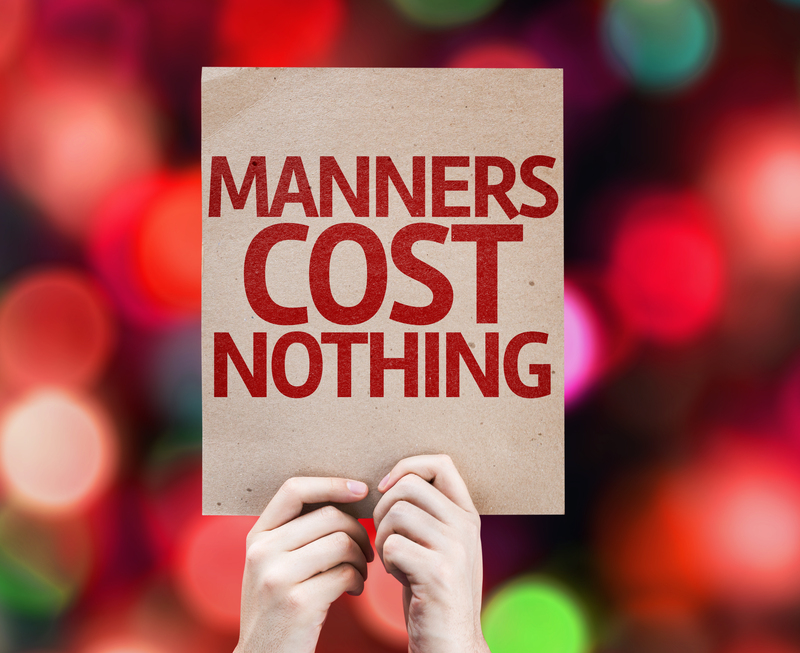Ensure a Swift Move with Effective Packing Strategies
Posted on 21/05/2025
Ensure a Swift Move with Effective Packing Strategies
Are you preparing for a move and hoping to avoid the chaos of last-minute packing? An organized approach can transform what is often considered a stressful event into a smooth and even enjoyable experience. In this article, we'll guide you through the best packing strategies for a swift move, offering expert advice, practical checklists, and tips to help you keep everything on track. Read on to discover how to ensure your move is efficient, stress-free, and perfectly organized.
Why Effective Packing Strategies Matter for a Swift Move
A move--whether it's across the city or across the country--can be overwhelming without a plan. Effective packing strategies are essential for several reasons:
- They save valuable time during both packing and unpacking.
- Reduce damage to your belongings by ensuring proper packing materials and methods.
- Minimize the risk of items being lost or misplaced.
- Help you stay organized and reduce moving-related stress significantly.
Efficient moving strategies allow you to transition into your new space swiftly and settle in with minimal hassle. Let's dive into the actionable steps you can take to master your next move.

Preparation: The Foundation of a Swift Move
Start Early: The Key to Organized Packing
One of the most effective packing strategies for a swift move is to begin early. Ideally, start packing at least 4-6 weeks in advance, especially for a large household. Creating a realistic packing timeline ensures you tackle the process in manageable stages--not all at once.
Declutter Before You Box
Before you even think about boxes and tape, declutter your home. Go room by room and decide what to sell, donate, recycle, or throw away. Eliminating unnecessary items will:
- Reduce moving costs, since you'll need fewer boxes and less space in the moving truck.
- Make unpacking much smoother and faster.
- Give you a fresh start in your new home with only essential belongings.
Gather Packing Supplies
Quality packing materials make all the difference. Here's what you'll need:
- Sturdy moving boxes in various sizes
- Packing tape and dispensers
- Bubble wrap and packing peanuts
- Markers for labeling
- Plastic wrap for securing items
- Specialty boxes for dishes and wardrobe items
- Labels or colored stickers for easy category identification
Tip: You can often get free boxes from local stores, but make sure they're in good condition to avoid damage to your possessions.
Strategic Packing: Room-by-Room Approaches
Pack Non-Essentials First
Begin with items you don't use daily, such as off-season clothing, decor, books, and collectibles. Label boxes clearly and stack them in an out-of-the-way area until moving day.
Adopt the "One Room at a Time" Rule
To maintain organization and reduce overwhelm, focus on packing one room at a time. This method ensures no item is missed and simplifies both loading and unloading the moving truck.
Protect Valuables and Fragile Items
- Wrap breakables like dishes and glassware individually in bubble wrap or paper.
- Use original packaging for electronics if you still have it.
- Label every box containing fragile items with a bold "FRAGILE" notice and an arrow indicating upright orientation.
- Stack these boxes on top in the moving truck to prevent crushing.
Pack by Category: Thematic Packing Tips
Some moving experts recommend thematic packing, grouping similar items together rather than by room. For example, pack all books from the house in one set of boxes, all linens in another. This can make unpacking even swifter if you're particular about item placement and organization.
Smart Labeling and Inventory for a Swift Relocation
Label Everything Clearly
- Use large, bold markers to note room destination and contents on each box.
- Color-code boxes by room: living room in green, kitchen in red, etc., for fast unloading.
- Label more than one side so you can identify boxes from multiple angles.
Create a Moving Inventory List
Keep a separate notebook or digital list tracking each box, its label, and its contents. This is vital for a swift move because:
- You can easily spot if anything goes missing.
- It simplifies insurance claims if there's damage or loss.
- Helps you prioritize which boxes to unpack first.
Number Your Boxes
For added efficiency, number each box and note the number in your inventory. This creates a cross-referencing system that's especially useful when hiring movers--nobody can claim a box got left behind if every numbered box is checked off the list at both ends.
Specialized Swift Packing Techniques
Use the Suitcase and Drawer Hack
Don't waste space! Pack heavier items, such as books, inside rolling suitcases for easy transport. Leave lightweight clothing in dresser drawers--just secure the drawers with plastic wrap so nothing spills. This strategy not only saves boxes but also makes for a faster move on both packing and unpacking days.
Pack a "First Night" Box
One of the most overlooked ways to ensure a swift and stress-free move is packing a special box or suitcase with your essentials for the first night:
- Toiletries
- Medications
- Phone chargers
- Bedding and pajamas
- A change of clothes
- Snacks and water
- Important documents (ID, lease papers, keys, etc.)
This way, if you're too tired to start unpacking, you'll have everything needed for a comfortable first night in your new home.
Leverage Technology: Moving Apps & Tools
There are numerous apps and tools designed to streamline your move. Consider using:
- Inventory management apps (like Sortly or Moving Organizer)
- Printable moving checklists
- Virtual room planners to pre-arrange furniture in your new home
Using technology can save hours on both the packing and the planning process.
Effective Packing Strategies for Special Items
Art, Antiques, and Collectibles
Wrap unique or fragile items with extra care, using appropriate art boxes and plenty of cushioning. Take photographs for insurance purposes and transport these items yourself if possible.
Electronics
- Remove batteries and cables, storing them in labeled bags.
- Take a photo of the wiring setups to simplify reconnection at your new home.
Appliances
Defrost and clean refrigerators, washing machines, and dishwashers at least 24 hours before your move. Tape down any moving parts, and consult manufacturer manuals for additional safety advice.
Professional Packing Services -- When Is It Worth It?
If you're short on time or have particularly delicate or valuable items, consider hiring professional packers to assist. Their expertise and resources can take care of time-consuming or complex packing tasks, ensuring:
- Items are packed using the best materials and methods.
- Belongings are properly inventoried and labeled.
- Your overall move remains swift, smooth, and stress-free.
Tip: Even if you choose not to hire packers for your entire move, you can opt for partial service for particularly difficult or breakable items.
Moving Day: Tips to Ensure a Swift Transition
Have a Plan of Action
- Start early and keep all packed boxes stacked in a central, accessible location.
- Direct the movers clearly so items go into the correct rooms upon arrival.
- Keep your labeled "essentials" box easily accessible.
- Use your inventory checklist to count boxes on and off the truck.
Keep Communication Open
If working with a moving company, provide them with a copy of your inventory list and color-coding system. This ensures that the move remains swift and organized--important when paying by the hour!
Post-Move: Unpack Efficiently
Unpacking can stretch on for weeks, but it doesn't have to. Start with essentials, use your inventory for reference, and tackle one room at a time--reversing the packing process to ensure a swift and seamless transition.

Frequently Asked Questions: Swift Packing and Moving
-
How far in advance should I start packing for a move?
Start packing non-essentials at least 4-6 weeks before moving day and reserve the last week for daily-use items. -
What is the fastest way to pack when moving?
Declutter first, use standardized packing materials, adopt thematic or room-by-room packing, and label everything clearly. -
How can I avoid stress during the moving process?
Plan ahead, follow structured checklists, ask friends or professionals for help, and pace yourself day by day.
Conclusion: Your Blueprint for a Swift, Stress-Free Move
Proper planning, strategic packing, and effective labeling are the keys to ensuring a swift and trouble-free move. By following these packing strategies for a swift move, you can:
- Save significant time and energy
- Protect your belongings from unnecessary damage
- Ensure a seamless transition into your new home
Moving doesn't have to be stressful! With early preparation, the right supplies, and the organizational hacks outlined above, you'll be ready to enjoy your new space from the moment you arrive. Download a checklist, keep your labels sharp, and turn your moving day into a memorable, stress-free event. Here's to a swift, efficient, and happy move!

